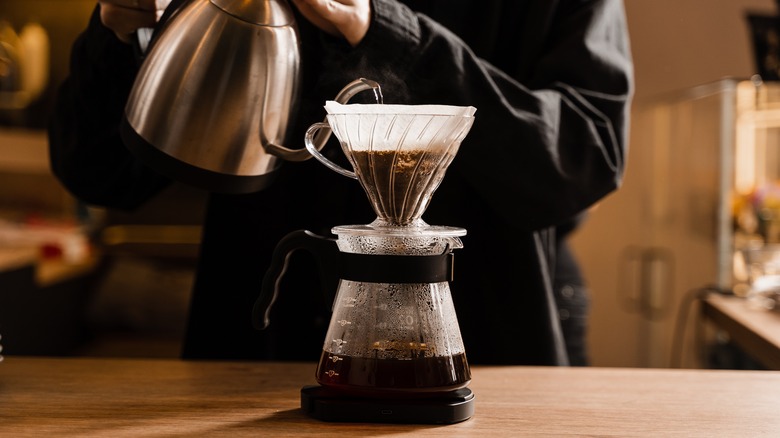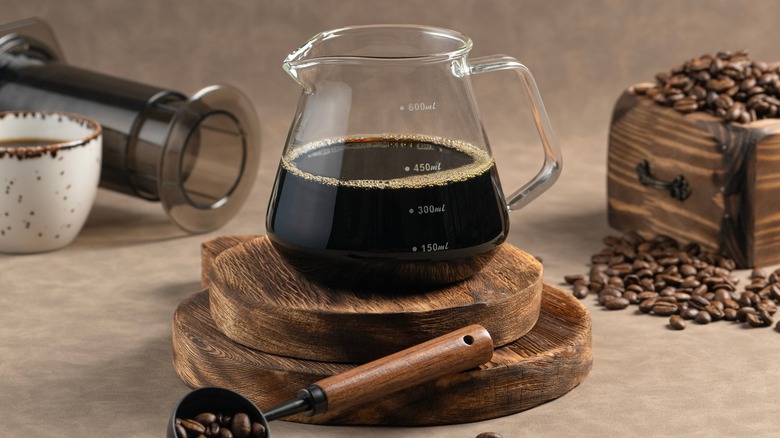Avoid A Common Pour-Over Coffee Mistake With A Bit Of Patience
We may receive a commission on purchases made from links.
Get your morning java to barista-level good with one simple coffee brewing hack. Blooming is a coveted coffee technique that involves adding a small amount of hot water to ground coffee, then allowing the liquid to seep through before pouring in the remaining water. These transformational seconds — just 30 seconds is usually enough — allow for a little magic to happen. The foam that forms from this initial wetness allows carbon dioxide to depart the grounds, which in turn can refine the overall flavor and reveal more suppressed tasting notes.
Matt Woodburn-Simmonds, ex-barista and founder of Home Coffee Expert further explains the purpose behind this coffee pouring method. "The most common mistake is not allowing the coffee to 'bloom,'" he says. "[T]his is allowing the CO2 in your beans to escape when you first start pouring. If you don't allow the gas to escape, you'll get a flat cup of coffee." So long as your beans are fresh and the ratio of ground beans to water is to your liking, you should end up with a noticeably better cup of joe.
Feel free to experiment, but somewhere between a 15:1 and 20:1 water-to-coffee ratio is a good starting point when using pour-over coffee makers. Popular pour-over coffee tools include the Hario V60 Pour Over Set or AeroPress Espresso-style Maker, which are a couple of the best ways to make coffee without a traditional coffee maker.
More common coffee-making mistakes
Although a little patience will serve you well when it comes to pouring, waiting too long can also get you in trouble. Coffee expert Woodburn-Simmonds identifies another pour-over coffee mistake: "Too long extraction time. If you're brewing a single cup then it shouldn't take more than three minutes to extract. Any longer and you're going to get a bitter, over-extracted coffee. Once you hit your time limit, remove the pour-over cone from the carafe, even if there's water still in it." If you find you've under-extracted your coffee you can also try incorporating higher-temperature water. However, if you believe your brew to be over-extracted, then the easiest solution is to simply restart.
Woodburn-Simmonds shares one final tip, noting "Uneven pouring is also common. This is really just a practice thing but slow circles working from the middle to the outside, then back to the middle is ideal. Learning to get this right generally takes time. Using a Gooseneck Kettle will make it a lot easier." Slow, full-coverage circles combined with stirring the grounds can also succeed in creating a more heavily caffeinated brew, similar to nitro brew, which arguably has more caffeine than iced coffee, and flat whites, which are distinguished by their higher caffeine content due to the double shot of espresso involved.

